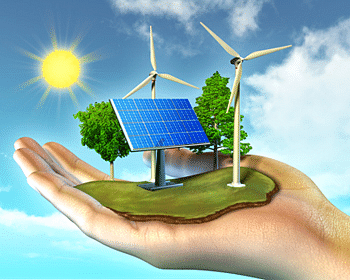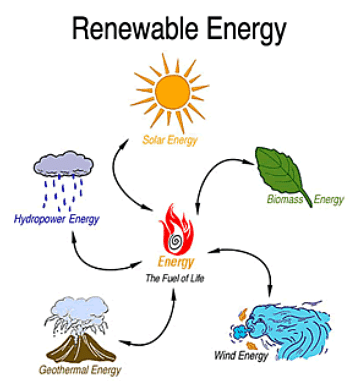Namrata Das Exams Prep Master
Exams Prep Master
Energy is essential for human life to exist on our planet and for the evolution of various life forms on earth. The resources we use to extract energy are referred to as sources of energy. Everything that we use today, be it food, clothes, vehicles, fuel, books, furniture, cooking gas, utensils, toys, roads, etc. is obtained from renewable and non-renewable resources present on the Earth. There are two categories of energy sources, renewable and non-renewable sources. Sunlight, rivers, and wind are natural and renewable sources of energy. However, we often use fossil fuels like coal and petroleum more frequently than sunlight or wind as sources of energy. This is related to a few characteristics that a good energy source should come with. Coal and petroleum levels are higher in these respects when compared to sunlight and wind-generated energy. Now, we will discuss how long an energy source will last us.
| Table of Content |
Key Takeaways: Energy, Renewable Sources, Non-renewable Sources, Fossil Fuel, Solar Energy, Wind Energy.
Also check: Potential Energy
Characteristics of a Good Source of Energy
[Click Here for Sample Questions]
Following are the characteristics of a good source of energy:
- A good energy source should have a high calorific value, which means that the energy output should be greater than the input energy.
- It should be easily accessible.
- It should be economical.
- It should provide energy for a maximum period of time and at a steady rate.
- It is easy to store and transport from one point to another.
- It should be sustainable and safe to use.
- It should be easily transferred into other forms.

Also check:
Types of Sources of Energy
[Click Here for Sample Questions]
The main energy source on Earth is the Sun. However, there are other sources of energy such as coal, geothermal energy, wind energy, biomass, petrol, nuclear energy, and many more. There are two broad categories of energy sources, namely, renewable and non-renewable sources of energy.
Also read:
Renewable sources of energy are the source of energy from natural processes and because of this, they get replenished constantly. Examples of renewable energy sources are solar energy, tidal energy, wind energy, geothermal energy, etc. The energy from the Sun, the movement of waves, the flow of the river – these are some activities that have been going on for millions of years and will continue to happen in the future as well. These sources of energy are consistent and reliable. They are also called non-conventional sources of energy.

Non-renewable energy sources are often referred to as fossil fuels, namely, coal, natural gas, and petroleum. These fossil fuels will be eventually be exhausted after a few centuries and we will not be able to regenerate them. However, we humans rely heavily on fossil fuels even now, and it accounts for about 80% of our energy requirements. Hence, these energy sources are also known as conventional sources of energy.

How Long will A Source Of Energy Last Us?
[Click Here for Sample Questions]
It is important for us to ask whether energy sources will last throughout our lives on Earth. As we rely heavily on fossil fuels, most of us have to ask if this energy source will last for long. We can split this discussion on renewable and non-renewable in two directions. First, we talk about how long a renewable source of energy will last us. Renewable energy resources are called ‘renewable’ because they can be constantly renewed or regenerated.
When we talk about non-renewable sources of energy, they are limited in quantity and cannot be regenerated easily once they are depleted. The formation of non-renewable sources of energy can take up to thousands of years. According to scientists, fossil fuels would not last for a long time. After a couple of centuries, we would exhaust all the natural resources like fossil fuels on Earth. If we consider the rate at which we are currently using fossil fuels, then it seems that we might exhaust these resources within just 100 years.
Therefore, it is important for us to move to non-conventional sources of energy such as sunlight, flowing rivers, and winds that have continued to enrich the earth and will continue to do so. This is because these are renewable energy and get replenished instantly. Hence, we have to start making a move towards renewable energy sources like solar energy, wind energy, and tidal energy and reduce our dependence on fossil fuels. It is very important to use non-renewable energy resources in a cautious manner. If not, our future generations will not be left with any of them.
Also read:
Points to Remember
- Renewable sources can be generated consistently and do not cause any pollution to the environment; while non-renewable resources cannot be generated easily and cause pollution to the environment.
- Fossil fuels are said to be ‘energy-dense’ which implies it contains a lot of energy in a small amount.
- Coal formation happens after various organic matter, usually, dead plant matter is subjected to high pressure and heat for millions of years.
- Petroleum formation happens after organic matter, usually animal-based, is subjected to high heat and pressure for millions of years; it helps to run vehicles, machinery, and generate electricity.
- Natural Gas is formed when a variety of plant and animal-based organic matter is subjected to frequent pressure and heat over thousands of years.
- Biomass energy is the energy extracted from firewood, farm wastes, cow dung, stalks of plants, etc.
- It is important for us to move to renewable sources of energy because they are better for the environment and unlike non-renewable sources, they can be renewed constantly.
Also check:
Sample Questions
Ques. What is a renewable source of energy? (2 marks)
Ans. Renewable energy sources generate energy that is sustainable - something that cannot be exhausted or is endless, like the Sun or the wind. Renewable energy is also called 'alternative energy'. It means that these sources of energy that are alternatives to the commonly used non-sustainable sources of energy like coal, fossil fuels, etc.
Ques. Is nuclear energy a renewable or non-renewable form of energy? (2 marks)
Ans. While nuclear energy is considered to be non-renewable, the material used for the production of nuclear energy is rare. It is produced through nuclear fission and uses a rare uranium type U-235. Also, it is not a clean energy source as it produces harmful nuclear waste.
Ques. What are the characteristics of an ideal source of energy? (2 marks)
Ans. An ideal source of energy should be economical and easily accessible. It should be sustainable and safe to use, while providing sufficient energy at a steady rate.
Ques. Is it possible for us to stop using fossil fuels? (2 marks)
Ans. While we know that fossil fuels are harmful, it may not be possible to stop using fossil fuels instantly, there are a few ways to lower the usage of fossil fuels like:
- Imposing a system of a carbon tax to reduce carbon footprint.
- Reducing the unimportant use of fossil fuels.
- Encouraging the use of alternative energy sources.
Ques. What are the main sources of energy in India? (2 marks)
Ans. When we consider commercial purposes coal, oil, thermal energy and natural gas are the main sources of energy in India.
Ques. State the differences between renewable and non-renewable sources of energy. (3 marks)
Ans. Following are the differences between renewable and non-renewable sources of energy:
- Renewable sources of energy can be naturally renewed over time. Non-renewable sources of energy are limited in quantity.
- Renewable sources are replaced by nature in a short time period. Non-renewable sources cannot be replaced by nature.
- Renewable sources do not cause any pollution. Non-renewable sources cause pollution when used.
- Examples of renewable sources- Solar energy, Wind energy. Examples of non-renewable sources- Fossil fuels, Coal.
Ques. List down a few benefits of using renewable sources of energy. (3 marks)
Ans. The benefits of using renewable sources of energy are as follows:
- Renewable sources of energy are exhaustible and provide clean energy.
- It does not produce greenhouse gas and polluting emissions.
- It will reduce our dependency on fossil fuels.
- Renewable energy sources are widely available.
Ques. What is meant by zero-carbon or low-carbon energy? (2 marks)
Ans. Low carbon plainly means less carbon dioxide (CO2). Carbon dioxide is the main greenhouse gas that drives global climate change. The energy that is generated using low amounts of carbon emissions such as wind, solar, hydro, etc is low carbon energy. These alternative methods of producing energy are better for the Earth as they release less carbon into the atmosphere.
Also check:



Comments